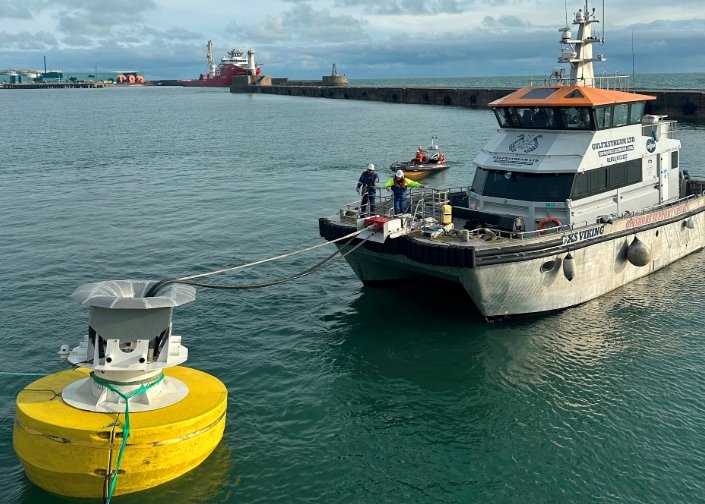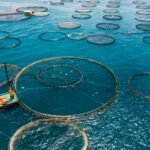In Glasgow, Scotland, on September 19, 2025, Oasis Marine unveiled a game-changing hydrogen buoy system that taps into offshore wind and solar power to produce clean fuel for ships. This innovation aims to slash diesel use in the global shipping industry, which pumps out nearly 3 percent of worldwide carbon dioxide emissions each year, by offering easy refueling at sea.
The discovery has sparked excitement among experts who see it as a key step toward greener oceans and economies. Ships could soon moor up to these buoys for emission-free hydrogen, making long voyages more sustainable without relying on dirty fuels.
The Push to Green the Shipping World
Shipping keeps the world connected by moving goods across oceans, but it faces tough hurdles in cutting pollution. Diesel engines power most vessels, and finding clean replacements has been slow despite global pledges to reduce emissions by 50 percent by 2050 under the International Maritime Organization rules.
Experts point out that offshore wind farms already generate huge amounts of renewable energy, yet much of it goes unused because storage and transfer options are limited. Recent projects, like the hydrogen-powered cargo ship in Norway that launched trials in early 2025, show promise but lack widespread infrastructure. Oasis Marine’s approach builds on this by linking clean energy directly to ships at sea, solving a major bottleneck in the shift to zero-carbon transport.
This ties into broader trends, such as the European Union’s push for green hydrogen hubs in the North Sea, where Scotland plays a central role. With wind resources off its coast capable of producing over 25 gigawatts by 2030, the region stands ready to lead.

Inside the Oasis Hydrogen Buoy Design
The Oasis Hydrogen Buoy stands out as a floating powerhouse that combines wind turbines and solar panels on sturdy mooring platforms. It uses electrolysis to split seawater into hydrogen and oxygen, storing the gas in tough tanks built to handle rough waves and storms.
Vessels simply connect to the buoy for quick refueling, much like plugging in at a gas station but without the fumes. This setup avoids the risks of high-pressure tanks or ammonia storage, which can be costly and hazardous. The system also includes an electric charging option through the Oasis Power Buoy, giving ships flexibility for hybrid operations.
Engineers designed it for easy integration with existing offshore wind farms, turning idle energy into fuel on demand. Early models focus on crew transfer vessels for wind maintenance, which burn the most diesel in operations today.
Breakthrough Tests at Kelvin Lab
Rigorous testing happened at the Kelvin Hydrodynamic Laboratory in Glasgow, where scale models faced simulated sea conditions to check mooring strength and fuel transfer safety. The trials, backed by Scottish government funds, confirmed the buoy holds steady in waves up to several meters high, ensuring safe bunkering even in bad weather.
Data from these sessions showed minimal stress on connections, paving the way for full-scale builds. One key finding was how the buoy’s design cuts refueling time to under an hour for large ships, compared to days for traditional methods. This certification marks a first in the industry for hydrogen bunkering at sea.
The project drew on partnerships with universities and ship owners, like O.S. Energy, which is retrofitting a vessel for hydrogen use. Such collaborations speed up real-world adoption.
Key Benefits of This Clean Tech Shift
Adopting hydrogen buoys could transform shipping in several ways. Here are some standout advantages:
- Lower Emissions: Ships switch from diesel’s heavy pollution to zero-carbon hydrogen, helping meet strict global climate goals.
- Cost Savings: Renewable energy from wind farms makes fuel cheaper over time, with estimates showing up to 30 percent reductions in operating costs for frequent routes.
- Safety Boost: Offshore refueling reduces port congestion and spill risks, as hydrogen transfers happen far from populated areas.
- Job Creation: Building and maintaining these systems could add thousands of green jobs in Scotland’s coastal regions by 2030.
These perks extend beyond shipping to support wider renewable networks, like exporting hydrogen to Europe via pipelines planned for 2026.
Comparing Diesel and Hydrogen in Shipping
To highlight the shift, consider this breakdown of key factors for a typical cargo vessel on a transatlantic route:
| Aspect | Diesel Fuel | Hydrogen via Buoy |
|---|---|---|
| Emissions | High CO2, 1,000+ tons per trip | Near-zero, clean electrolysis |
| Refueling Time | 24-48 hours at port | Under 1 hour at sea |
| Cost per Trip | $500,000+ in fuel | $350,000, dropping with scale |
| Infrastructure Need | Land-based stations | Offshore buoys, wind-linked |
| Safety Risks | Flammable spills | Controlled gas transfer |
This table shows why hydrogen edges out diesel for future fleets, especially as oil prices fluctuate amid geopolitical tensions in 2025.
Looking Ahead to a Cleaner Maritime Future
As the world races to decarbonize, Oasis Marine’s buoys could spark an offshore hydrogen highway across the North Sea and beyond. Plans include deploying prototypes at Scottish wind farms by late 2026, with potential exports to Asian markets where shipping demand grows fast.
This ties into recent events, like the UN’s 2025 climate summit urging faster marine tech adoption. Challenges remain, such as scaling production, but the momentum is strong with government backing and industry interest. For shippers worried about rising fuel costs and regulations, this offers a practical path forward.
What do you think about this hydrogen breakthrough? Share your views in the comments below and spread the word to help push for greener seas.


















